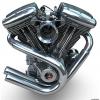I don't know this Daryl and haven't seen the study. Niacin (NA) is cheap, Nicotinamide (NAM) is also, Nicotinamide mononucleotide (NMN) is not, at least the real stuff. There's no way I could take the Niacin in the quantities I'd need. Plus there is chance of liver damage longterm in the higher quantities. "Niacin’s safety record is equally impressive. However, a brief foray into the use of very-slow-release niacin preparations in the 1980s taught us an important lesson: niacin is very safe, if the liver is exposed to it for only a few hours at a time. Niacin is, after all, just vitamin B3. However, 24-hour, day-after-day exposure to niacin over an extended period can be toxic to the liver. Thus, the very-slow-release niacin preparations that yielded sustained, high blood levels of niacin caused liver toxicity in 10-20% of people who used these preparations in the 1980s. Unfortunately, this learning experience left some physicians fearful of recommending niacin to their patients. For this reason, very-slow-release niacin should be avoided."
A few things:
1. The fear of liver damage is unwarranted unless you have an existing liver problem and/or you take high dosages of slow release niacin for a long period of time. The use of immediate release Niacin is a pretty 'safe' bet.
2. The flush effect is not permanent. You can slowly build up to higher levels without flushing. Personally, I can take two grams of niacin at once without flushing (unless I drink something hot with it). When I first began supplementation, I would get a nasty flush at 50mg.
3. If you can handle the flush and you seem to flat line while trying to build up to a higher dosage, you can take aspirin about 30 minutes prior to niacin and not flush at all. I do suggest you make note of the aspirin / NAD cycle synergy that Darryl has mentioned in the past.
thank you for the report !
There is positive synergy at high doses. I don't have the links handy, but you can probably find them pretty quickly with the search function. I believe the aspirin dosage is higher than one should take long term due to side affects, but can be mitigated by using a different form of it.
its probably due to the fact I read the flush is due to PGD2.
omega 3 seems to reduce it : http://www.ncbi.nlm....les/PMC3308705/
also aspirin works to remove PGD2.. Same for quercetin
Instead of aspirin I use willow bark that also showed increased mitochondria respiratory chain
EDIT: for more reading about the flush, here is a good article, they covered the topic : http://www.life-enha...-to-your-health
Could be interesting to know if the release of PGD2 decrease over time of niacin due to its anti inflammatory effect. A long term follow up study would be most welcome
Edited by Tom Andre F. (ex shinobi), 27 June 2016 - 06:12 PM.
































 This topic is locked
This topic is locked











.svg/2000px-Hayflick_Limit_(1).svg.png)





















